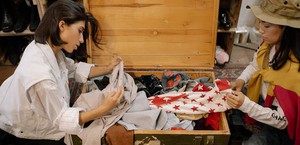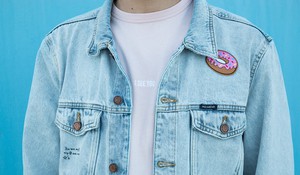- Clothes
- Bags
- Accessories
-
Inspiration
- Shoes
Thrifting: Just as Fast (& Problematic) as Fast Fashion?
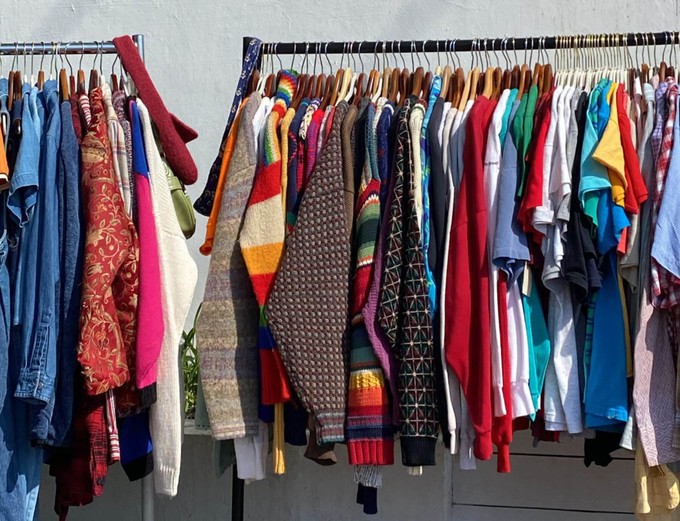
Thrifting started out of need. Then, it evolved into a popular, eco-friendly alternative to fast fashion, rejecting trends and overconsumption. The irony?
Thrifting has now become a consumeristic trend in itself!
So, if you’re trying to make more ethical choices without sacrificing your style, let’s look into it objectively.
Here are the benefits and problems with thrifting, why we don’t think it’s a solution to fast fashion (even though I used to believe the opposite), and simple tips and mindset shifts to embrace it more mindfully.
What is thrifting?
Technically, thrifting used to mean shopping second-hand clothes at an actual thrift store or charity shop: so, a retail establishment run by charitable organisations to raise money for a specific cause.
However, nowadays, thrifting is commonly used to describe buying second-hand clothes from other types of shops too, like vintage ones.
So, since we're talking about the benefits and problems of thrifting as a habit, let’s use the second definition.
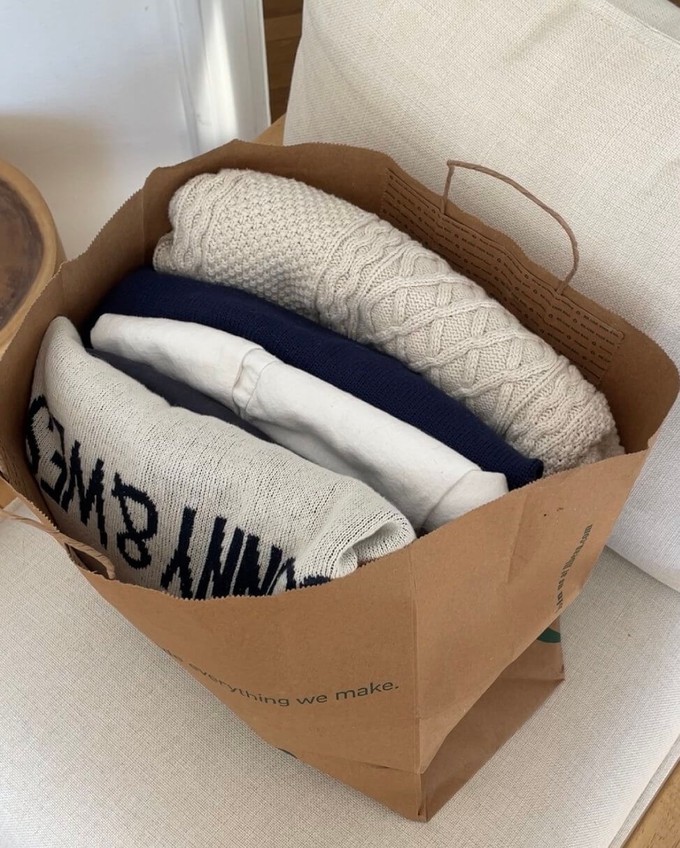
The benefits of thrifting
- You’re extending the life of an existing garment instead of buying a brand new one – This means you’re saving it from landfills (= reducing waste) and bypassing the initial production phase of a new garment, which is the most polluting one. Prolonging its life by just 9 months will reduce its carbon, water, and waste footprint by 20-30%
- You’re not supporting fast fashion – And there are many problems with fast fashion because those brands create clothes without caring about their environmental impact, and they often rely on sweatshops and exploitative labour
- Thrifting can be affordable – While it’s becoming more expensive (I’ll share why, soon), it can still have similar prices to new fast fashion garments
- It fights the stigma associated with buying and wearing second-hand clothing – Low-income people used to be judged for doing that. Now, thrifting is seen as “cool”
- Thrifted clothes don’t follow trends – Fast fashion pushes you to keep buying (and discarding) clothes to chase temporary trends. Instead, thrifting moves away from them, inspiring you to think timelessly
So, thrifting feels like a logical, sustainable solution to fast fashion and overconsumption, doesn’t it?
That’s why I used to embrace it, too. But over the past few years, I noticed a dangerous shift.
The negative consequences and problems with thrifting
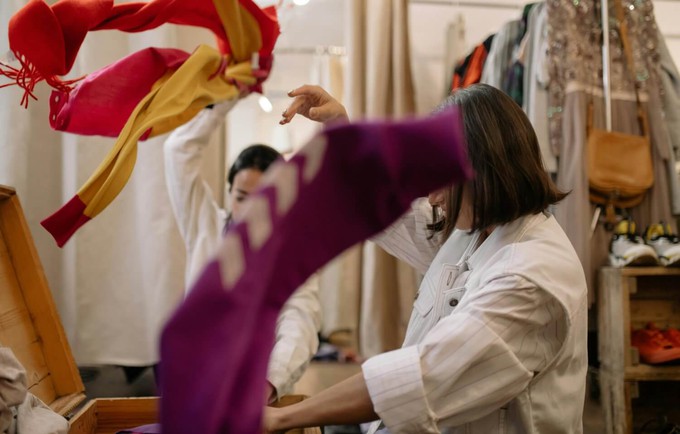
This might come as a shock since I co-founded Project Cece, this platform bringing hundreds of ethical fashion brands in one place, but years ago… I used to be a huge shopaholic. I even got a train to a different city to do a massive Primark haul as soon as it opened a branch there.
When I discovered the reality and hidden cost of fast fashion, though, I decided to stop.
Or better, motivated by the perceived benefits of thrifting, I switched to buying second-hand clothes at the same pace as fast fashion. So, turns out, I was still in the same trap: overconsumption.
That’s one of the reasons why I no longer think of thrifting as a sustainable or ethical alternative to fast fashion (unless you do it mindfully, and I’ll share some tips soon). The main problems?
- Overconsumption – Many consumers get in the habit of doing thrift hauls (perhaps inspired by influencers sharing theirs), only wearing those items a couple of times, discarding them or reselling them… and then same again. Sounds familiar? Yep, it’s the same vicious cycle as fast fashion!
In fact, I’d argue that thrifting has contributed to the normalisation of overconsumption, tricking you into thinking that, as long as you donate your clothes, it’s all good for the environment. In reality… - Waste and waste colonialism – Donating clothes won’t make up for overconsumption! Only 20% are actually sold in charity or thrift shops. Most of them are sold to recyclers and traders, and 70% of donated clothes end up in Africa and the rest of the Global South. By then, they're pretty much unwearable. So, thrifting and the second-hand clothing market is actually fuelling waste colonialism
- Gentrification of thrifting – Because it’s become a trend in itself and there’s now higher demand, second-hand clothes have become more expensive. So, this is impacting low-income people who used to rely on thrifting out of necessity, not fun or habit
- A lot of it is still fast fashion – Have you noticed how, in thrift shops, many second-hand or “vintage” clothes come from SHEIN, Zara, H&M, and other fast fashion brands? It all goes back to that cycle: consumers keep buying fast fashion clothes and then donating them to charity shops, thinking they’re genuinely doing something good for the planet. Once again, this keeps fuelling overconsumption
How you can thrift more mindfully and sustainably
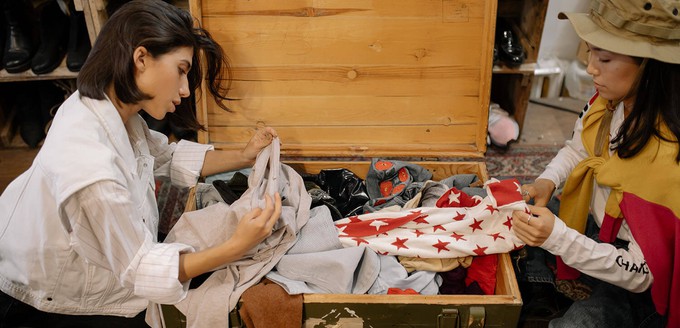
Let me be clear: the problem isn’t with thrifting itself, especially when it’s done sporadically or out of necessity. It’s with doing it mindlessly and at the same pace as fast fashion.
So, here are some ideas to thrift more ethically:
- Start by finding your style – Instead of falling for random impulse purchases (and then finding excuses not to wear them), identify what clothes or aesthetics make you happy whenever you rewear them
- Thrift in your wardrobe – I’m serious! The most sustainable item isn’t a thrifted one: it’s something you already own. By getting creative and pairing up your existing garments in different ways, you’ll unlock new outfits (here are some unusual clothing combos you’ve probably never thought of)
- Pause, and ask yourself some questions before thrifting – Picked up an item in a thrift store? Ask yourself:
- “Would I still buy this at full retail price?"
- "Is it too similar to something I already own?"
- "Does it match my style?"
- "Does it go with what’s already in my wardrobe?"
- "Will I rewear it at least 30 times?” - Donate clothes mindfully – For example, if you’ve really fallen out of love with them, consider donating them to local shelters (like homeless or domestic violence centres) rather than huge chains or overstocked thrift stores
- Consider alternatives to thrifting, too – You could also support ethical brands that make high-quality, durable clothes while caring about the planet and garment workers. Other eco-friendly and fun options are renting them and borrowing from friends and loved ones
So, we're absolutely not saying we shouldn’t thrift or that you should feel bad for doing it (we still love finding the occasional hidden gem in second-hand stores, too).
But let’s stop seeing thrift hauls as a solution to fast fashion: overconsumption is never ethical, even when it’s second-hand.
Share our story
Related articles
Community Fashion: Are You Sharing Clothes (& A Mission)?
Here's what happens when we start treating clothes as a more mindful, shared experience (rather than an endless, unsustainable cycle of personal possessions)
Is Second-Hand Clothing Sustainable? The Truth Behind It
It does come with some eco-friendly benefits, but is second-hand clothing really sustainable? From hauls to a lack of transparency, here’s what you should know.
Vintage Sustainable Fashion? Why Retro Isn’t Always Ethical
Is vintage sustainable fashion a given? While second-hand retro clothing comes with several perks, there are a few ethical concerns, too. Here’s why.
Project Cece is a platform that collects ethical fashion from vetted brands and shops in one place. Browse ethical fashion for women and men and find items that fit your style, budget and values!
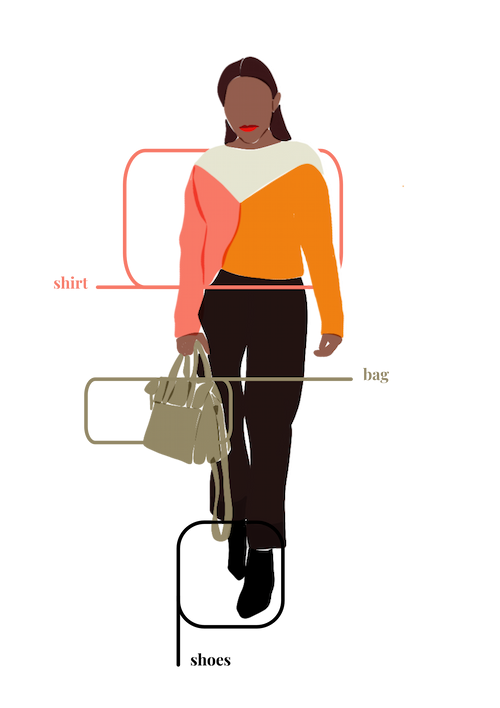
_large.png)

